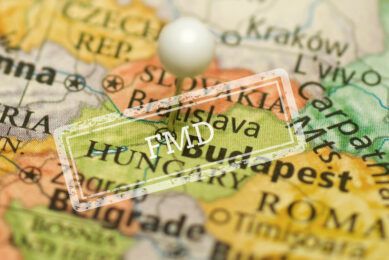Forget more milk in 2015!

A couple of months ago Global Dairy Farmers visited Ireland. We were challenged by Irish members of GDF and farmers to discuss the statement: “Ireland will produce 50% more milk in 2020.” With extremely strong support of the government and the dairy industry this strategy to 2020 is planned and in progress.
It is clear that there is room for a 50% increase in milk production in this green country. The cost price of milk is lower than in other countries in Europe, based on pasture based systems. Plus the abolishment of the quota system came into effect in April 2015.
The question is how will Ireland achieve the 50% milk production increase
A new generation of young farmers are growing up and have fresh ideas. Their challenge will be to realise this 50% increase in milk production with the same cost price, because this is one of Ireland’s strengths. But if this happens, just as in New Zealand, by an increased use of concentrates, then the cost price will increase significantly. But little clouds were also appearing on the horizon in September 2014, such as decreasing milk prices and…
Milk prices are never certain
This leads me to the question: do I expect an increase in milk production worldwide in 2015? At the beginning of 2014 high milk prices were stimulating farmers in the US and Europe to increase their milk production. Also extremely favourable growing conditions and no big natural disasters (except drought in California) gave milk production a boost. This, together with a decrease in demand from China, lead to lower milk prices at this moment. Neither I nor other experts foresaw this big dip in prices. Others do not expect prices to recover within the first half year but I am a little bit more optimistic.
The dairy herd needs time to grown again
All revolves around the question whether we have the same boost in milk production in 2015 as we had in 2014? I don’t believe it!! First of all high beef prices have caused a lot of milk cows in China and the US to be slaughtered. Worldwide we are entering a period where there is a shortage of milk cows. And it takes at least three years for the dairy herd to grow again, and another extra year before milk production will increase. Part of the higher milk production in 2014 is caused by higher input of concentrates. With high milk prices this gives good margins, but at this moment we have to calculate whether the last kg of concentrates gives enough margin.
Backyard dairy farms are no longer acceptable
Total production will suffer due to the focus on quality of milk as well. Consumers in the developing world demand higher standards regarding food health and safety! As a consequence a lot of the so called street milk is not acceptable anymore. This means that small family backyard farms cannot produce for the market anymore. More milk has to be processed to mostly UHT milk. And this milk is not always available. My conclusion: It is not realistic that we will see the same boost in milk production as we did in 2014. Maybe there will be less milk?
Join 13,000+ subscribers
Subscribe to our newsletter to stay updated about all the need-to-know content in the dairy sector, two times a week.










